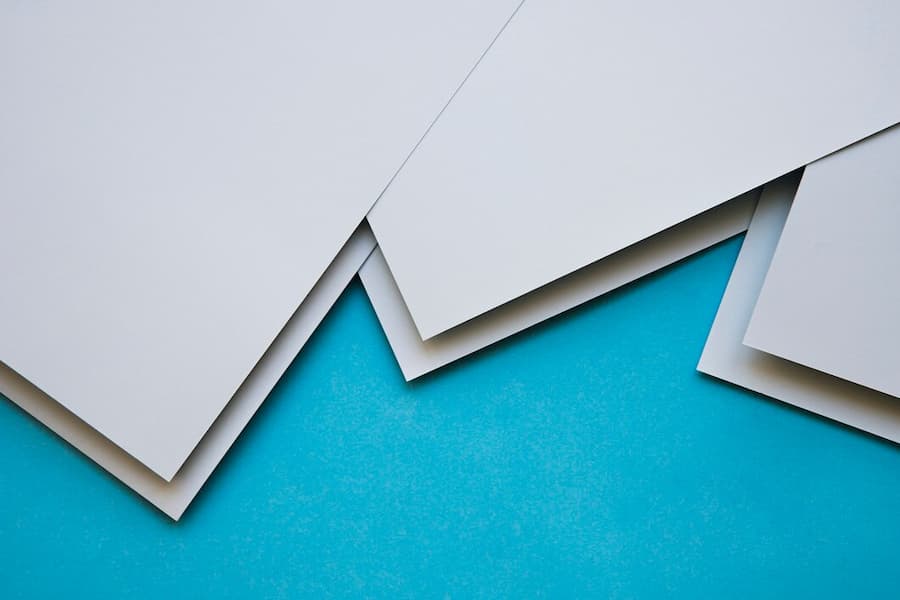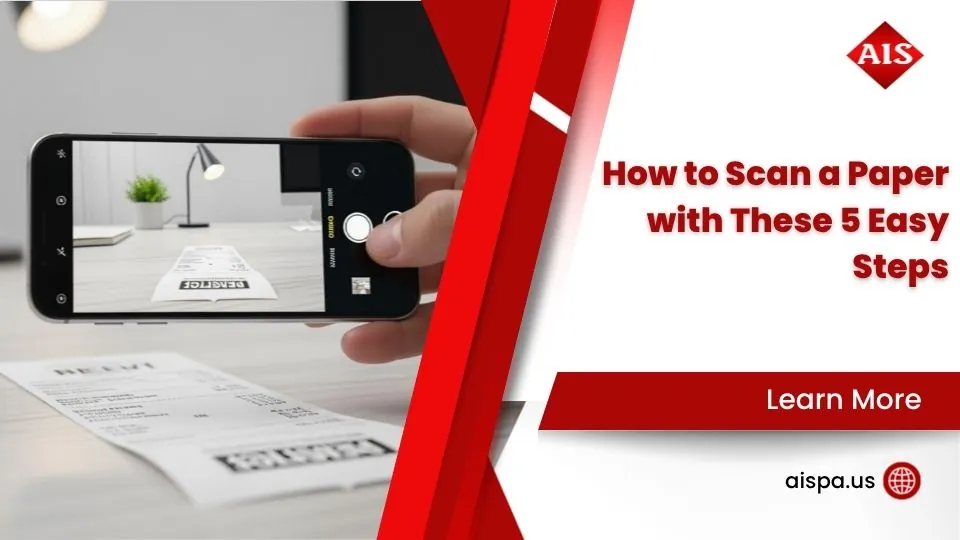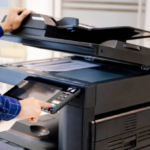Selecting the Appropriate Printer Paper Types, Sizes, and Details
Choosing the right type of paper for your printer is pivotal, impacting both the quality and longevity of your printed documents and images. The variety of different types of paper available can cater to every possible print job, from the standard copy paper for day-to-day needs to specialized photo paper for crisp images.
Understanding the nuances of paper weight, the compatibility with different inkjet printers or laser printers, and the finish of each sheet of paper allows for optimized printing performance. Therefore, acknowledging the vast assortment of printing paper types, sizes, and specifications ensures you choose the right medium for your specific task, enhancing the final output.

Understanding Printer Paper Types
Common Printer Paper Types
Inkjet Printer Paper:
Designed specifically for inkjet printers, this type of printer paper excels in handling the wet ink application, resulting in vivid colors and sharp details for a variety of print jobs. It’s available in multiple finishes, including glossy for photos and matte for general printing, making it a versatile choice. For more insights on maximizing print quality with the right paper, visit associated imaging solutions.
Laser Printer Paper:
Tailored for the laser printer, this type of paper boasts a smoother surface, enhancing the quality of professional documents. Its higher heat tolerance ensures the toner adheres well, making it ideal for fast-paced environments requiring bulk printing with crisp text and graphics.
Photo Paper:
The battle between glossy and matte paper in the realm of photo paper hinges on the desired finish. Glossy photo paper, recommended for vibrant images, offers a shiny finish, while matte provides a non-reflective surface, ideal for subdued aesthetics. Both types enhance the depth and detail of photographs significantly.
Cardstock:
Known for its thickness and durability, cardstock is the go-to for projects requiring a sturdier type of paper, such as business cards, postcards, and invitations. Its varied weight options offer flexibility for different creative needs.
Specialty Papers:
Diving into the realm of specialty papers, we encounter eco-friendly options like recycled paper, sturdy bond paper for official documents, and versatile kraft paper, suitable for packaging and craft projects. Each different paper type brings its unique characteristics to the table, catering to specific applications and preferences. For a deeper exploration of sustainable paper choices, check out associated imaging solutions.
Whether seeking vibrancy for photographs, crispness for professional documents, or sturdiness for creative projects, the perfect paper type awaits. Embracing this knowledge ensures every print reflects the quality and intent behind it, elevating the overall printing experience.
Paper Size and Specifications
Key Specifications to Consider
Size:
The importance of paper sizes like A4, legal, and letter cannot be overstated. A4, the most common size globally, fits a range of documents, from business letters to academic reports. Legal size is longer, ideal for legal documents that require extra space. Letter size is prevalent in the U.S. for a broad spectrum of uses, from personal correspondence to business needs. Each size serves a unique purpose, guiding the type of paper for printing needed for specific tasks.
Weight:
The weight of paper significantly influences the feel and appearance of the printed material. Heavier paper conveys quality and durability, suitable for professional presentations and business cards. Lighter weights, on the other hand, are economical and practical for everyday printing tasks. Understanding paper weight guide principles helps in choosing the right printer paper, ensuring the paper’s weight matches the intended use, enhancing the document’s overall impact.

Brightness and Opacity:
Brightness refers to how much light a sheet of paper reflects, affecting the sharpness and clarity of print on the paper. High brightness levels make colors pop and text stand out. Opacity, or the lack of see-through, is crucial for double-sided printing to prevent show-through. The right combination of brightness and opacity in printer paper specifications ensures that documents and images appear professional and are easy to read, making choosing the right paper essential for achieving desired printing results.
What are the typical paper sizes?
The range of typical paper sizes caters to various printing needs, from everyday documents to large-scale prints. The Letter size, measuring 8.5” x 11”, is the standard for most personal and business correspondence, making it the most widely used in North America. Legal size paper, at 8.5” x 14”, offers extra length for legal documents and contracts, providing additional space for detailed information.
Tabloid size, 11” x 17”, is favored for newspapers, small posters, and brochures, where a larger canvas is beneficial for layout and readability. Digital sizes, including 12” x 18”, 13” x 19”, and 14” x 20”, are tailored for the digital printing industry. These larger formats accommodate high-quality prints, marketing materials, and designs that require extra space for visual impact. Each paper size serves specific functions, from the compact and efficient Letter to the expansive digital formats, ensuring versatility across printing applications.
Selecting Paper for Specific Needs
Matching Paper Types with Printing Needs
Business Documents:
For business materials, professionalism and durability are key. Thus, laser printer paper or heavier paper like cardstock are often chosen for their crisp text and sturdy feel. These options reflect seriousness and sophistication, enhancing the document’s authority.
Photographs and Art Prints:
The eternal debate between glossy paper and matte paper for photos hinges on the desired finish. Glossy offers vibrance and shine, ideal for color-rich images. Matte, free from glare, provides a more subdued and artistic look, perfect for portraits and gallery pieces. Each type of paper amplifies different aspects of the images, playing a critical role in the aesthetic outcome of photo printing.
Crafts and Special Projects:
When it comes to crafts or special projects, choosing between cardstock paper, glossy, or specialty papers opens up a world of creativity. Cardstock lends durability and heft, suitable for greeting cards and scrapbooking. Glossy can make colors stand out in decorative elements, while specialty paper like vellum adds a touch of elegance to invitations and announcements. The kind of paper selected can transform the project, infusing it with the creator’s intended mood and style.
Selecting the appropriate paper for various needs involves understanding the distinct qualities of each type of paper available. From the standard paper size for daily correspondence to the specialty paper for unique projects, the right type of paper chosen can significantly elevate the quality and intention behind every print.
Environmental Considerations
Eco-Friendly Paper Options
Choosing eco-friendly paper options is vital for those looking to reduce their environmental impact. Recycled paper stands out as a prime choice, offering the benefit of using less energy and water in its production compared to virgin paper. This type of paper not only conserves resources but also reduces landfill waste, making it a sustainable option for everyday printing tasks.
Sustainable practices in the paper industry, such as responsibly managed forestry and reduced chemical use, further enhance the eco-friendliness of printer paper available. Therefore, opting for recycled paper or paper certified by environmental standards can significantly contribute to conservation efforts.
What People Also Ask
What type of paper is best for high-quality photo printing?
For high-quality photo printing, glossy paper or specialized photo paper is the best choice. These papers are designed to highlight vibrant colors and ensure sharp details, making your photographs look professional and visually appealing. The glossy finish helps in reflecting more light, which enhances the image quality.
Can I use inkjet paper in a laser printer?
Using inkjet paper in a laser printer is not advisable. Inkjet paper is optimized for the liquid ink used by inkjet printers, and it may not withstand the high heat generated by laser printers. This mismatch can lead to poor print quality and potentially damage the printer over time.
What does paper weight indicate?
Paper weight refers to the thickness and heft of the paper, usually measured in grams per square meter (gsm) or pounds (lbs). It gives you an idea of the paper’s quality, durability, and suitability for different printing tasks. Heavier paper tends to be more durable and less transparent, ideal for high-quality prints and professional documents.
How do I choose paper for double-sided printing?
For double-sided printing, select paper with high opacity to prevent the print on one side from showing through to the other. Papers specifically labeled for double-sided use, such as thicker office papers or those with a coated finish, are typically designed to minimize show-through and ensure clear prints on both sides.
Are there eco-friendly options for office paper?
Yes, there are several eco-friendly options for office paper. Recycled paper, made from post-consumer waste, reduces the need for virgin fibers and the environmental impact of paper production. Papers sourced from sustainably managed forests and those certified by environmental organizations also offer eco-conscious choices for reducing your carbon footprint.
Conclusion
In conclusion, understanding the different types of printer paper, paper weight guide, and the impact of paper size and specifications on your printing tasks is crucial. Choosing the right printer paper for specific needs enhances the quality and outcome of your print materials. Eco-friendly paper options further allow for sustainable printing practices.
Therefore, when planning your next printing project, consider the type of paper, its intended use, and environmental impact to make informed decisions that meet your requirements and support conservation efforts.
For more information and services you can contact us for a free quote and estimation.
- Address: 165 Veterans Way, Warminster, PA 18974
- Email: sales@aispa.us
- Call Us: (215) 999-8445











